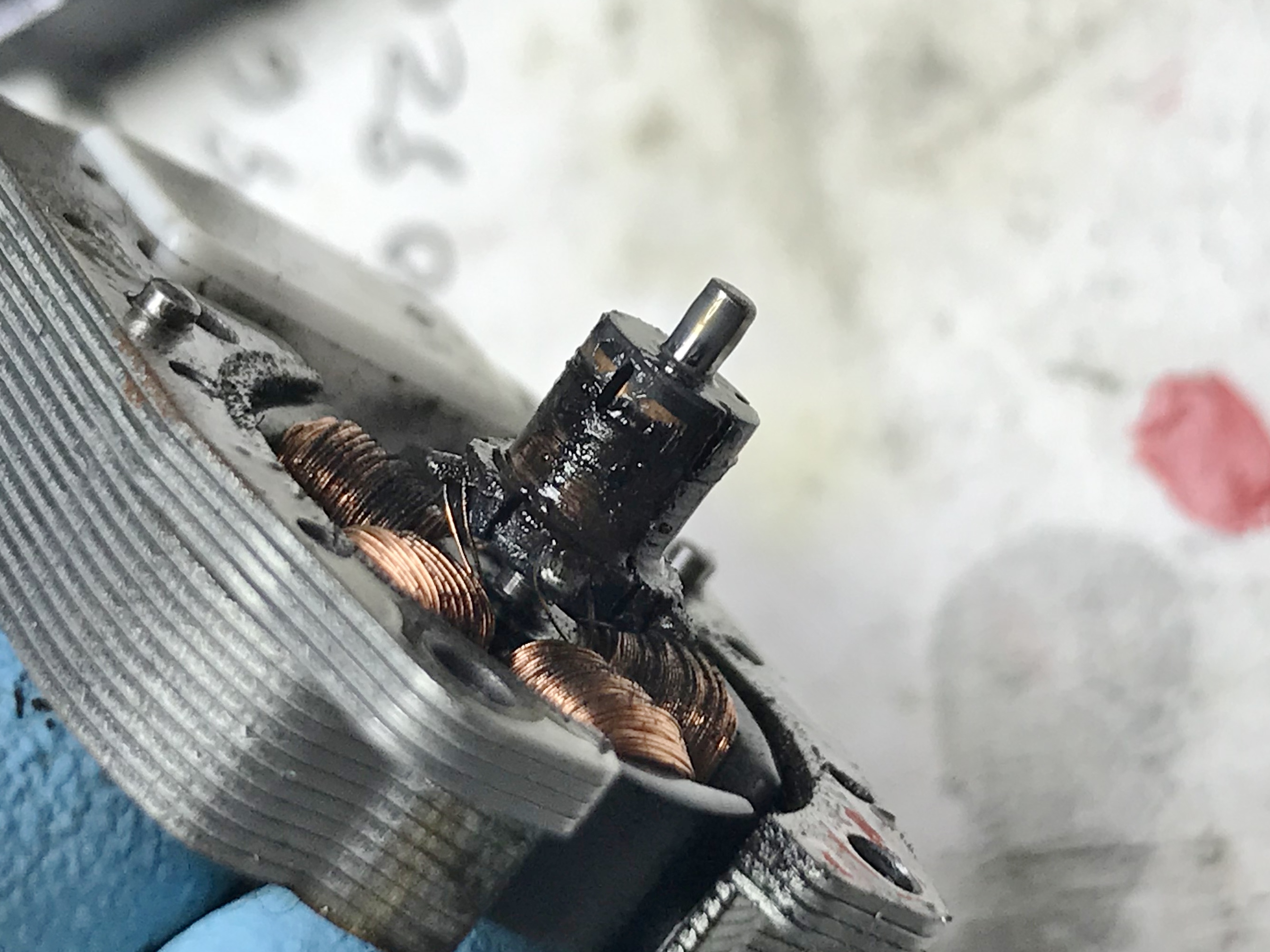|
Save your Digital Decoders!

Locos with digital decoders
(especially newer locos with the high efficiency propulsion decoders) need
routine maintenance to protect their decoders from failure. I have had
numerous locomotives come in with decoder failure that is caused by the
armature's insulating segments getting clogged with brush residue and oil.
Excessive oil on the armature bearings of locomotives (which use brushes 601460)
wicks down onto the armature commutator. As the brushes wear, the carbon
dust collects in the oil instead of falling away. This carbon dust is
conductive and when mixed with oil it gets packed into the insulating segments
(grooves) of the armature by the brushes. This causes excessive current to
be drawn by the motor and can eventually burns out the decoder.
There is a simple and cost
effective fix for this. At least once a year, or more often if you use a
particular loco a lot, clean out the motor cover and the armature. This is
easy to do.
1. Remove the brushes from the
cover by pulling the brush springs out of the way. Remove the two screws
that hold the motor cover in place and remove the cover being careful not to
break any wires.
2. Use a cotton swab wet with
Ronsonol lighter fluid to wipe out the residue from inside the cover. Wipe
again with a dry swab.
3. Remove the armature and use
another swab wet with fluid to gently wipe the contact surface (the copper part)
of the armature commutator. Check the grooves on the commutator to make
sure they are clear of dirt and debris. You may flush the armature with
clean fluid right from the bottle if necessary to remove debris. Dry the
armature with a paper towel and re-install. Install the motor cover
and retaining screws.
4. Clean the brushes by
rolling them on the paper towel with a little fluid and check them for wear and
replace if necessary. Fit the brushes into the motor cover and return the
retaining springs to their original positions. Finally, put just a trace
of oil on the armature shaft where it protrudes through the brush cover.
You have just saved yourself the
cost of a new decoder. It is easy and fast to do. However, I realize
some folks are still squeamish at the thought of going this far. That is
okay. That is why we are here to help. We will perform this service
for locos $65.00 plus return
shipping and brushes if needed. Remember, over oiling the front motor
bearing on your locos which use the 601460 brushes is to be avoided if at all
possible.
|
